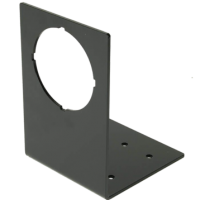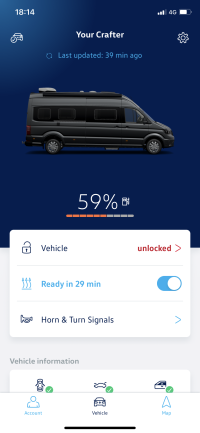W
Wongo
Yes thats what I do on the Cali and thats another electrical load done away with if you had a heating element.
Did you have the gaslow cylinders and if so where did you put the fill valveI Spoke directly with Truma UK about LPG they said no problem at all.
Hi yes the gaslow system seems to be the most professional had 1x 11kg and 6kg. Location is just below the VW towbar option on the offside. Will get a photo tomorrow for you, needless to say not in the side of the van. !!!Did you have the gaslow cylinders and if so where did you put the fill valve
Who fitted the gaslow system for you and do you mind revealing the cost,can you see the guages easily when filling thanksHi yes the gaslow system seems to be the most professional had 1x 11kg and 6kg. Location is just below the VW towbar option on the offside. Will get a photo tomorrow for you, needless to say not in the side of the van. !!!
Hi,Who fitted the gaslow system for you and do you mind revealing the cost,can you see the guages easily when filling thanks


@LaercioHi Simon, I will repeat what I been told when asked the same question to the dealer:
- All Grand Calis come standard with gas/electric mix heaters you can use only gas only electric 6Amps/10Amps or both mixed
- If you choose Diesel as I did you will need the auxiliary heater which is the coolant heater as specified bellow:
9M5 Diesel fuelled coolant heater (active during engine operation to support standard heater)
I did choose this one but now I do regret to not choose the one with the remote, if you choose the remote one you will have a nice screen control over the cab side by the sos button and the key fob button to turn on before you go to the vehicle for the max time of 120 minutes you can even program using this over cab control for a certain time
So the difference between both auxiliary heater options would be the ability to program, the over cab screen with buttons and the remote control
I did choose Diesel because it is more practical in my case which is to have the more autonomy as possible, so I can have only one gas bootle and just fill the regular diesel thank anywhere, the tank of gas can go out really fast and it also contribute to more humidity inside and sometimes even windows can get fogged which doesn’t happens with the diesel counterpart, I hope it helps!

You will have round vents dotted around the van at floor level. One will at the front of rear the bench seat, another at the side facing the sliding door, another in the bathroom and one in the rear garage. At least that’s what we have in our GC680. We find it’s best to have the electric/gas combo to get a good heat blast coming out, we also found this with Truma heaters in previous Motorhomes, so it’s not just this way on the GC.As we prepare for our first fall/winter with our GC600 I am just now really getting into the heating system. We have the standard Gas/Electrical set-up (no Diesel heating). I have watched all the California Chris videos on the system and I just now plugged the van into the garage electric at home and turned on the electric heating.
Now here is my total newbie question- I realize the boiler is doing its thing to generate heat....but where will the heat come out within the van? I would like to check that all is working- but I am not certain where the heat should be coming from.
Thanks in advance for such a newbie question!
Thank you! Our fear was that the heat was supposed to be coming from another place or places and was only coming from those 3 vents! Perfect! I'm glad all is working as it should. Good to know about the combi heating better blast- that will be helpful in winter.You will have round vents dotted around the van at floor level. One will at the front of rear the bench seat, another at the side facing the sliding door, another in the bathroom and one in the rear garage. At least that’s what we have in our GC680. We find it’s best to have the electric/gas combo to get a good heat blast coming out, we also found this with Truma heaters in previous Motorhomes, so it’s not just this way on the GC.
We've taken the GC out over the New Year in 2021. Used EHU and were constantly turning it down!Thank you! Our fear was that the heat was supposed to be coming from another place or places and was only coming from those 3 vents! Perfect! I'm glad all is working as it should. Good to know about the combi heating better blast- that will be helpful in winter.
Mark, really helpful! Thanks for sharing your experience. We don't like things too hot...so really helpful!We've taken the GC out over the New Year in 2021. Used EHU and were constantly turning it down!
We've had two 11kg gas bottles since we got it in 2021. I'm not yet on the second bottle, but when on EHU we tend to only use the electrics; we leave water heating on most all the time on EHU (since it does take a while longer than gas), and while it's very true that the gas heats much quicker, that very small amount of planning goes a long way!
The vent in the wetroom means it gets very hot, if you allow it to do so, so acts nicely as a drying room too.
A blast from the gas and it'll heat the van up very, very quickly. It doesn't seem like much, those few vents, but boy, you'll soon be turning it down to around 20-22, at which point, just switch back to electric anyway.
So the strong advice: don't waste the gas. Sure, if there's no hook up then no choice. When we went to one 4 day festival with no EHU, we only put the heating on when we got up, and had but a few minutes to wait for the shower to be hot enough. At the next festival, with EHU, like I say, we just left it on most of the time anyway (not during the day when not there, but when we got back, and then overnight).
And we do quite a lot of cooking (non-festivals anyway), but the amount of gas the hob uses is pretty minimal anyway.
...so used sparingly, the one 11kg gas bottle will last over a year? Is this right? Is this down to mainly using site electrical hook ups? Or is it also down to other factors?We've taken the GC out over the New Year in 2021. Used EHU and were constantly turning it down!
We've had two 11kg gas bottles since we got it in 2021. I'm not yet on the second bottle, but when on EHU we tend to only use the electrics; we leave water heating on most all the time on EHU (since it does take a while longer than gas), and while it's very true that the gas heats much quicker, that very small amount of planning goes a long way!
The vent in the wetroom means it gets very hot, if you allow it to do so, so acts nicely as a drying room too.
A blast from the gas and it'll heat the van up very, very quickly. It doesn't seem like much, those few vents, but boy, you'll soon be turning it down to around 20-22, at which point, just switch back to electric anyway.
So the strong advice: don't waste the gas. Sure, if there's no hook up then no choice. When we went to one 4 day festival with no EHU, we only put the heating on when we got up, and had but a few minutes to wait for the shower to be hot enough. At the next festival, with EHU, like I say, we just left it on most of the time anyway (not during the day when not there, but when we got back, and then overnight).
And we do quite a lot of cooking (non-festivals anyway), but the amount of gas the hob uses is pretty minimal anyway.
Frankly, we're more than 2 years in and not through one bottle; the other one still closed. It depends on so many factors, and usage, but for sure, using EHU means that you're not using it....so used sparingly, the one 11kg gas bottle will last over a year? Is this right? Is this down to mainly using site electrical hook ups? Or is it also down to other factors?
We do not like things too warm, say around 17 degrees, and will stay within the UK. We do not use sites often, preferring to be in remote places.
What is the range of time an 11kg cylinder can be expected to last - worst and best case?
In our Ocean a 907 cylinder lasts many years. But we only ever use it for drinks and one gas ring meals

The VW California Club is the worlds largest resource for all owners and enthusiasts of VW California campervans.

